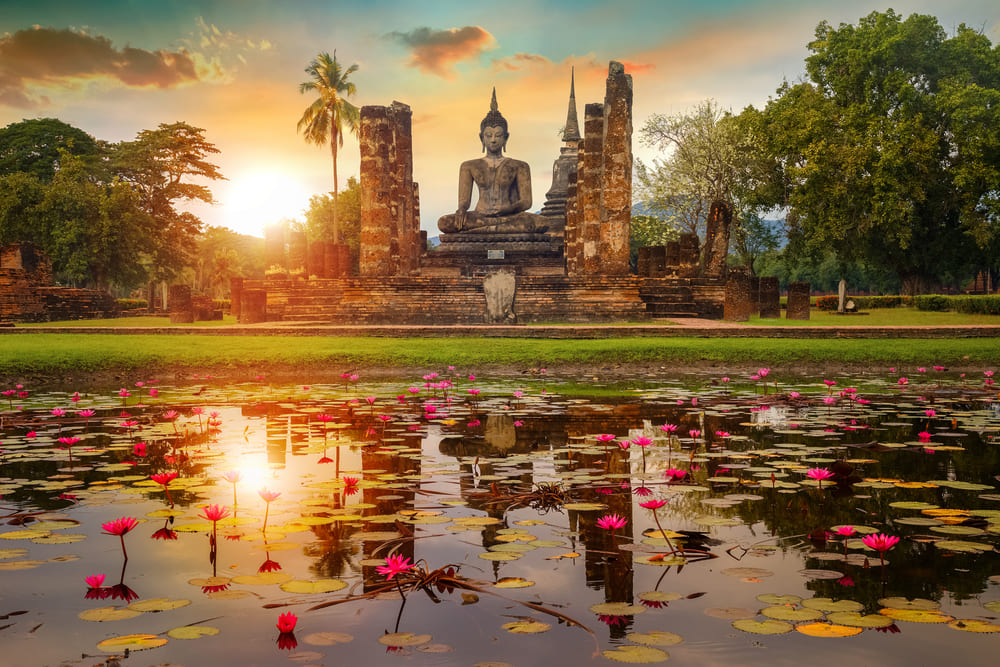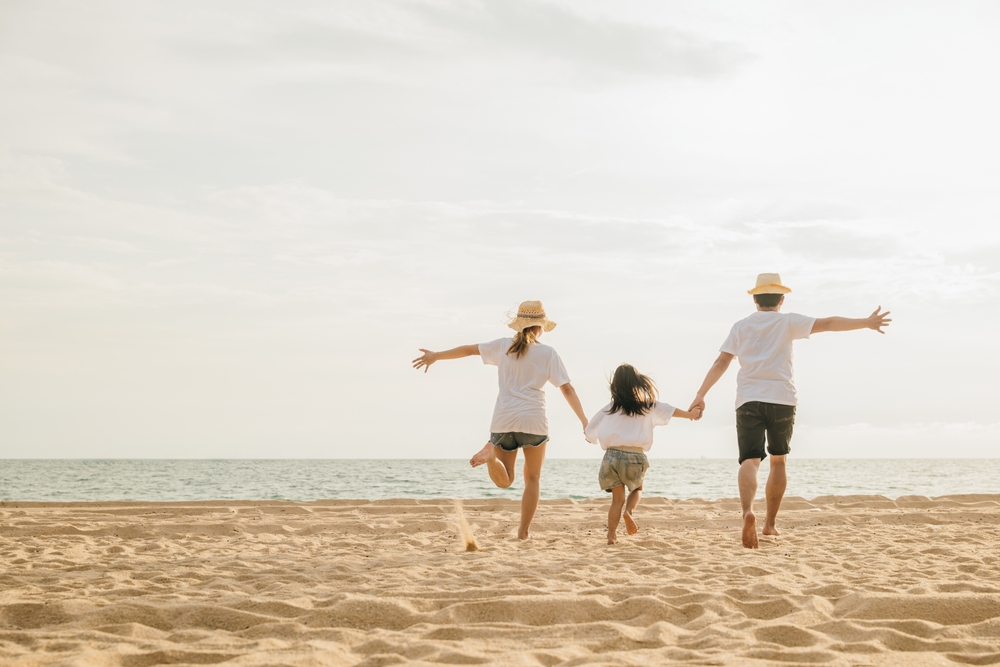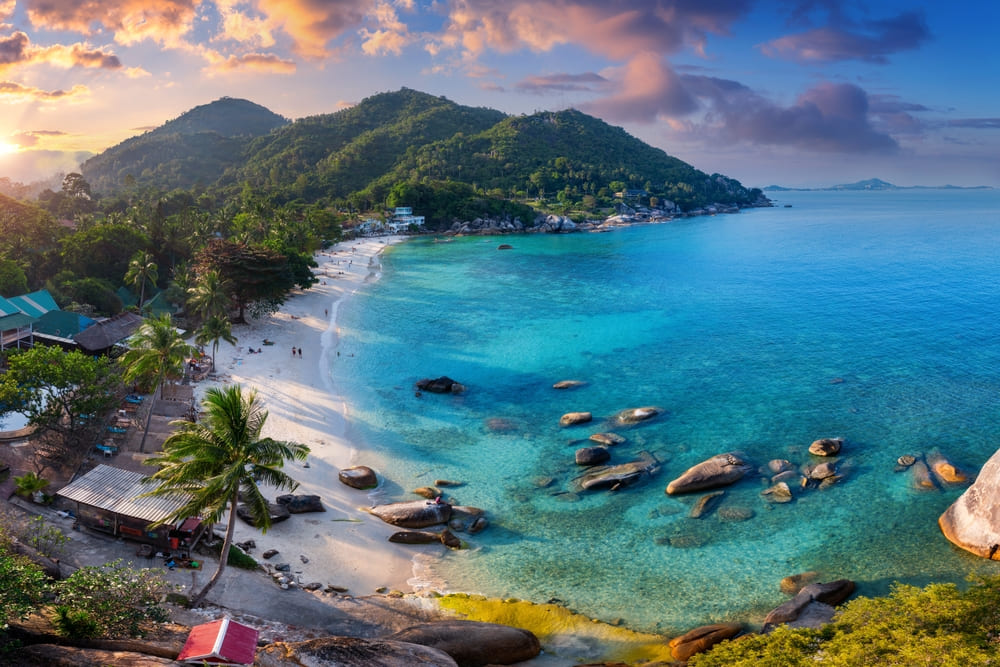Bangkok Airways Round-Up
- Step back in time and walk through the historic sites in Sukhothai, the first capital of Thailand, at Sukhothai Historical Park. As an important place bearing rich culture and stories, the park was declared a World Heritage Site by UNESCO in 1991.
- Filled with temples, ruins, and structures, Sukhothai Historical Park offers a captivating scene of the glorious Sukhothai. Admire the various architectural styles of structures and temples. Each ancient chedi and Buddha image tells a distinct story and showcases the rich cultural heritage of Sukhothai.
History of Sukhothai Historical Park

Dating back to the Sukhothai Kingdom, Sukhothai was established as the first capital of Thailand in 1249. Many monuments and structures were built between the 13th and 15th centuries, marking the unique beginnings of Thai architecture. Currently, the Sukhothai Historical Park preserves dozens of temples and monuments from this era.
During the Sukhothai Kingdom, Thai architecture received numerous influences, mainly from Khmer and Singhalese styles. As Thai art developed, the assimilation of these elements came together and created the distinct Sukhothai style. Key characteristics of the art style include the lotus-shaped chedi and strong Buddhist influence.
Sukhothai Historical Park contains a number of ruins and statues that reflect the ancient history of the kingdom and the stunning architecture of the Sukhothai style. With its importance to Thai culture and history, the park was declared as the 574th site on the UNESCO World Heritage List in 1991. Efforts to preserve the remaining structures at Sukhothai Historical Park continue to this day.
Rent a Bicycle and Ride Through History at Sukhothai Historical Park
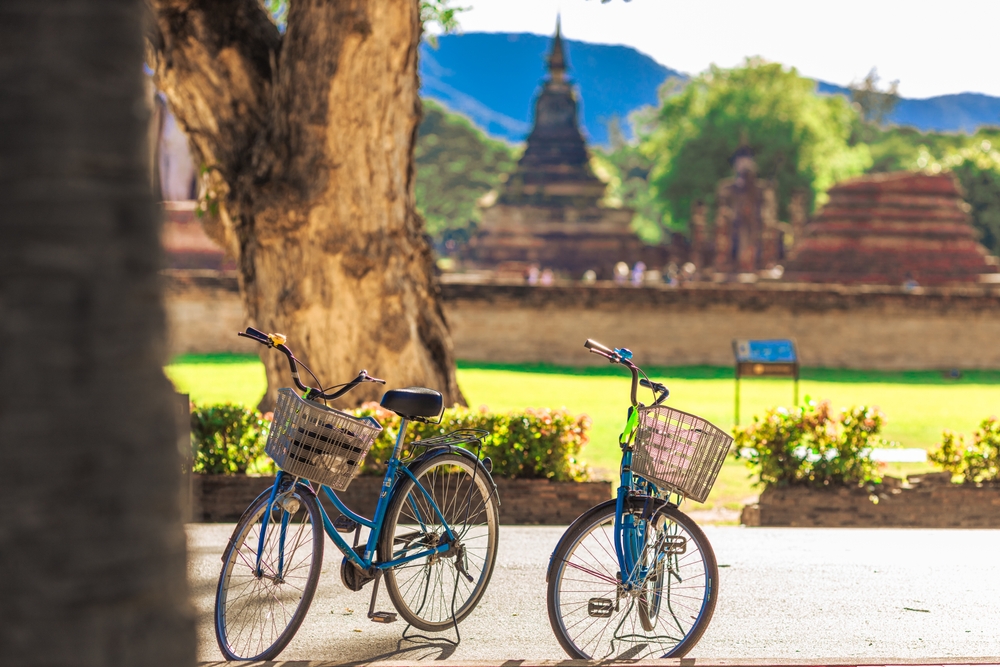
Covering approximately 70 square kilometers, Sukhothai Historical Park has a massive area containing monuments, temples, museums, ancient ruins, and grand Buddha statues all around. Visitors are welcome to explore the five parts of the park, and it is recommended to do so by renting a bicycle.
Discover the historical park in a fun and independent way by cycling. Pedal through each part while admiring the serene sights along the way to fully appreciate the peacefulness and the historical sites. The cost of bicycle rental may range between 10 and 50 baht per day.
Top 10 Landmarks at Sukhothai Historical Park That Take You Back in Time
1. Wat Phra Phai Luang

Located along the northern city wall, Wat Phra Phai Luang is one of the oldest monuments in Sukhothai, as it was established before the Sukhothai Kingdom. Towards the end of the 12th century, the temple was found during the reign of Angkor King Jayavarman VII, the king of the Khmer Empire. Back then, the area of Wat Phra Phai Luang was an outpost of the Khmer Empire before Sukhothai expanded and took over the land.
Surrounded by a 600-meter-long moat, Wat Phra Phai Luang was built during different periods, showcasing the evolution of Sukhothai architecture, as well as the different influences from Khmer, Sukhothai, and Ayutthaya. The three prangs at the temple were constructed in the Khmer architectural style with fine stucco reliefs.

In the 15th century, a mondop was built in front to enshrine four large Buddha statues. These statues are in different postures: walking, standing, sitting, and reclining. As time passed, the sitting and reclining Buddha images have mostly disappeared, but the standing and walking Buddhas are still in a decent state of preservation. Take a walk around and explore the remains of history at Wat Phra Phai Luang.
2. Wat Si Chum

Wat Si Chum is located in the northern part of the Sukhothai Historical Park. Since the 13th century, the temple has exhibited large structures of a mondop and a viharn. In the present, only the base and rows of pillars of the viharn remain in front of the mondop.
Known for its mondop, Wat Si Chum enshrines a revered Sukhothai-style Buddha image called Phra Achana. The huge Buddha figure in the subduing Mara mudra position dominates the roofless mondop, measuring 15 metres high and 11 metres wide. With a serene facial expression, Phra Achana is well-respected by the locals. Devotees often come to make prayers and put gold leaf on the right hand of the Buddha image to show respect.

3. Phra Buddha Sirimaravijaya Hall
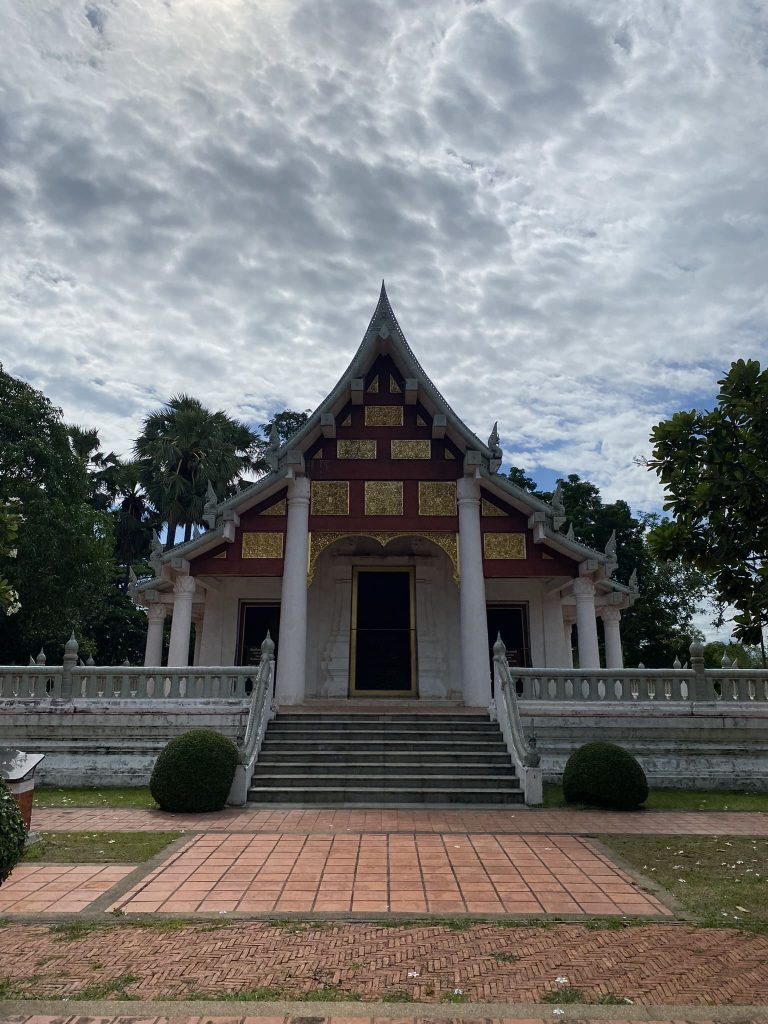
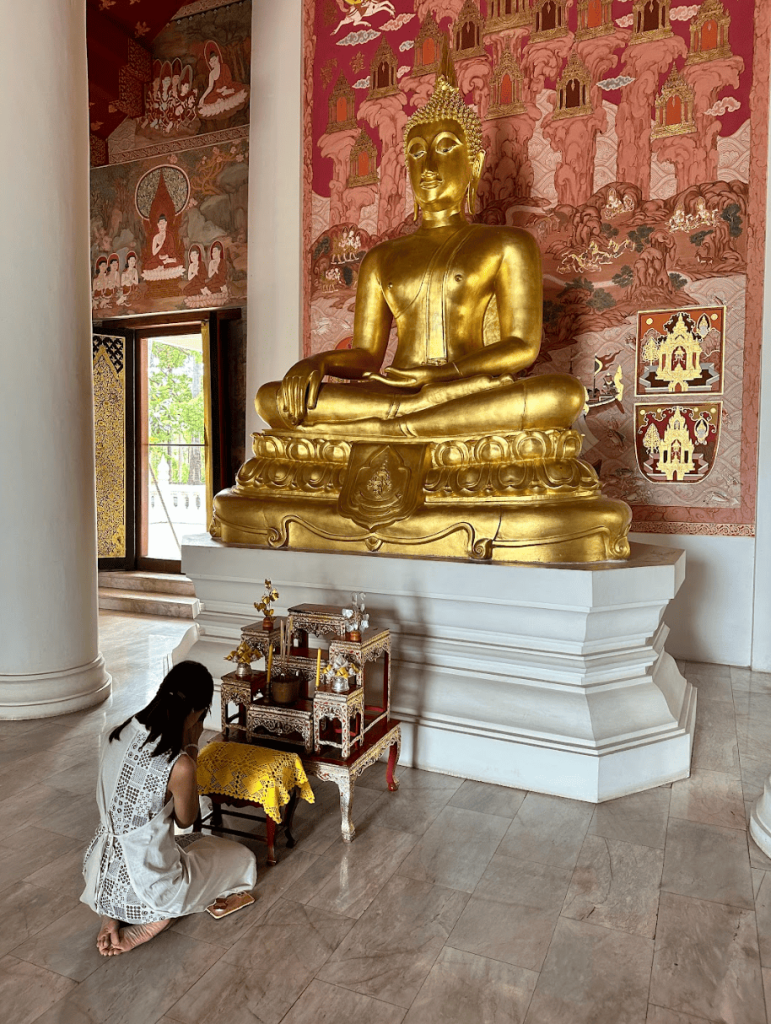
Situated within the Sukhothai Historical Park, Phra Buddha Sirimaravijaya Hall enshrines one of the most revered Buddha images in Sukhothai. It is home to Phra Buddha Sirimaravijaya, a sacred Buddha image from the Sukhothai period. The statue is in the Mara Vichaya posture, measuring 209 centimeters wide and 290 centimeters tall.
The Buddha image was once relocated to Wat Ratchathani in Sukhothai; however, a major fire broke out, and the statue was severely damaged. To preserve what remained, the Fine Arts Department restored and conserved the Buddha statue. It was transferred to Phra Buddha Sirimaravijaya Hall, where it has been preserved ever since.

Inside the hall, detailed mural paintings surround the bronze Buddha statue along the walls, depicting scenes of ways of life, traditions, and cultural practices from the Sukhothai period. These murals were painted on canvas and mounted on the walls so that the artwork would last for longer periods. Devotees often visit the hall for religious ceremonies, as the hall still serves as a spiritual site in Sukhothai.
4. Wat Mahathat

Situated in the central zone of the Sukhothai Historical Park, Wat Mahathat was built under the concept of Mandala, a Hindu symbol representing the universe. Considered the largest and most important temple in the Sukhothai empire, Wat Mahathat was founded in the 13th century by the first King of the Sukhothai Empire, Sri Indraditya. The development of the temple happened over time, and it was expanded and renovated several times by later Kings.
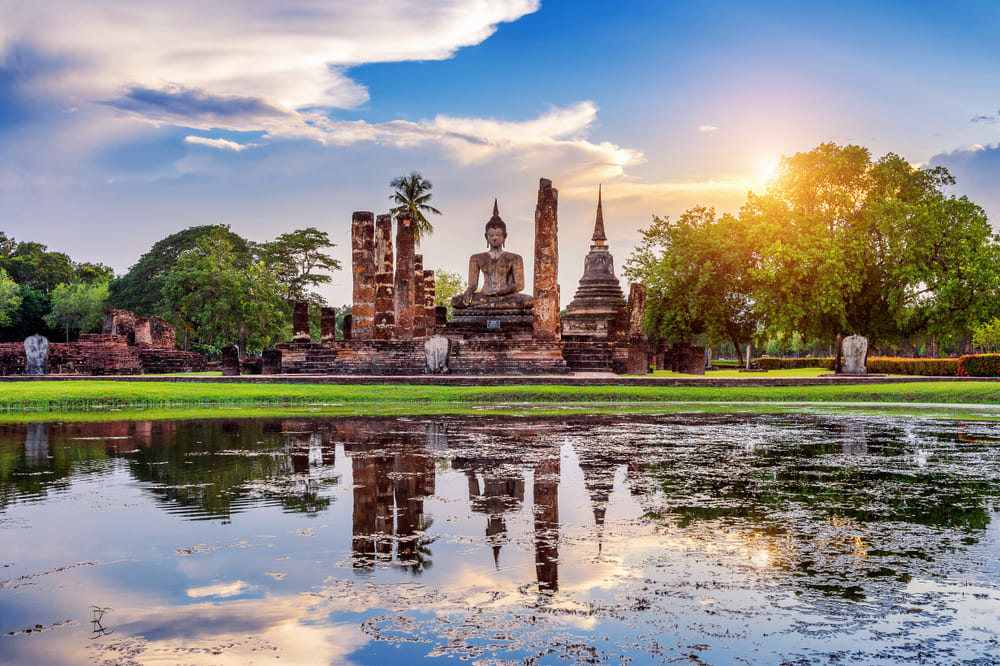
Surrounded by a moat and brick walls, Wat Mahathat contains viharns, an ubosot, numerous chedis, and three mondops enshrining huge Buddha images. Over the centuries, many structures were added to the temple, presenting structures and chedis in several architectural styles, including Lanna, Singhalese, Sukhothai, and Mon Hariphunchai.
Built in 1345, the main chedi is surrounded by many smaller chedis with a shape like lotus buds, reflecting the Sukhothai architectural style. The main chedi enshrines relics of the Buddha and statues in different postures. Visitors are welcome to explore the different parts of the temple grounds and observe locals making prayers to the Buddha images.
5. Wat Si Sawai
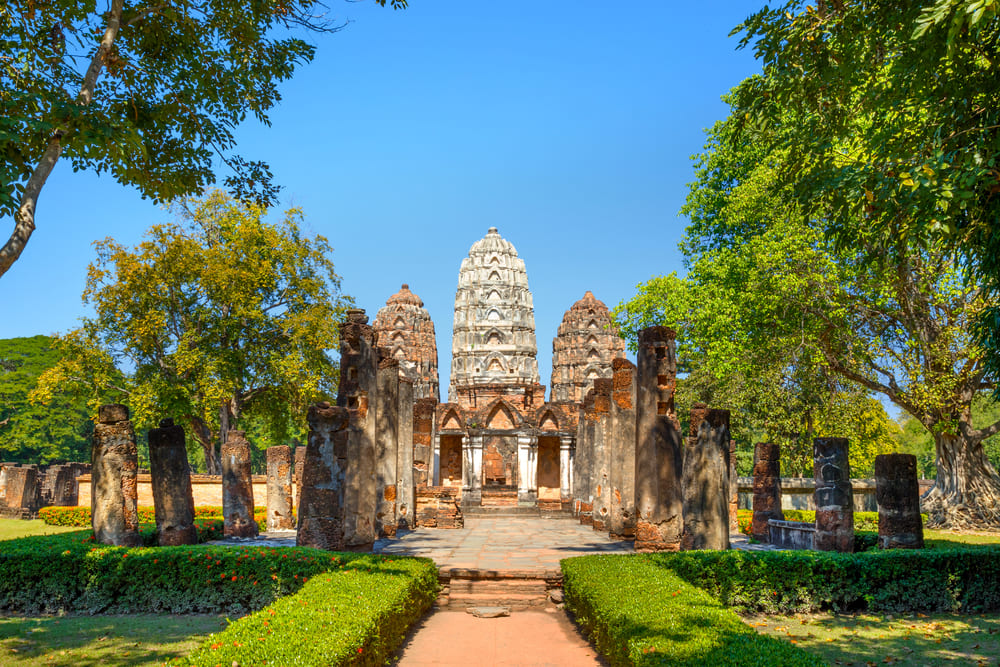
Wat Si Sawai is located just a few hundred meters away from Wat Mahathat. As one of the oldest temples in Sukhothai, it is believed to have been established toward the end of the 12th century or early 13th century, before the Sukhothai Kingdom. The temple presents a calm atmosphere with a large pond consisting of three Khmer-style prangs and two viharns.
Initially, Wat Si Sawai was founded as a Hindu sanctuary dedicated to Shiva. It only comprised three Khmer-style prangs, and the two viharns were added later in the Sukhothai period. The temple was then converted into a Buddhist temple following the addition of the viharns.
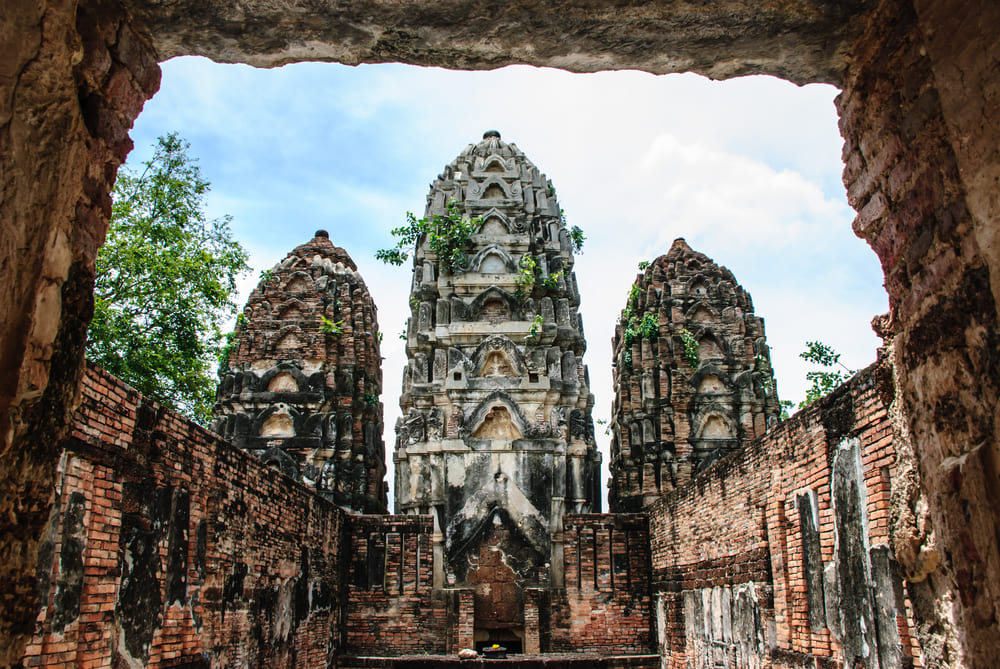
The well-preserved prangs are the temple’s most striking feature, covered with white stucco in a corn shape. Adorned with carvings of mythological creatures, the prangs present various mythological monsters, including Naga serpents, Makaras, and Kala. The blend of different architectural styles makes Wat Si Sawai a unique temple worth a visit at Sukhothai Historical Park.
6. Wat Sa Si

Located north west of Wat Mahathat, Wat Sa Si is in the central zone of Sukhothai Historical Park, right in the middle of the lotus pond. With its location, the temple is one of the most attractive monuments of the Sukhothai Historical Park.

Founded towards the end of the 14th century, the temple consists of a main chedi and other smaller pens, a viharn, an ubosot, and a Buddha image. The main chedi was constructed in a bell shape with a square base to enshrine the ashes of King Li Thai of Sukhothai. Situated in front of the main chedi, a large Buddha image in the subduing Mara posture sits on a circular pedestal. Pay a visit and admire the graceful Buddha statue and the architectural structures at Wat Sa Si.
7. King Ramkhamhaeng Monument & Ramkhamhaeng National Museum
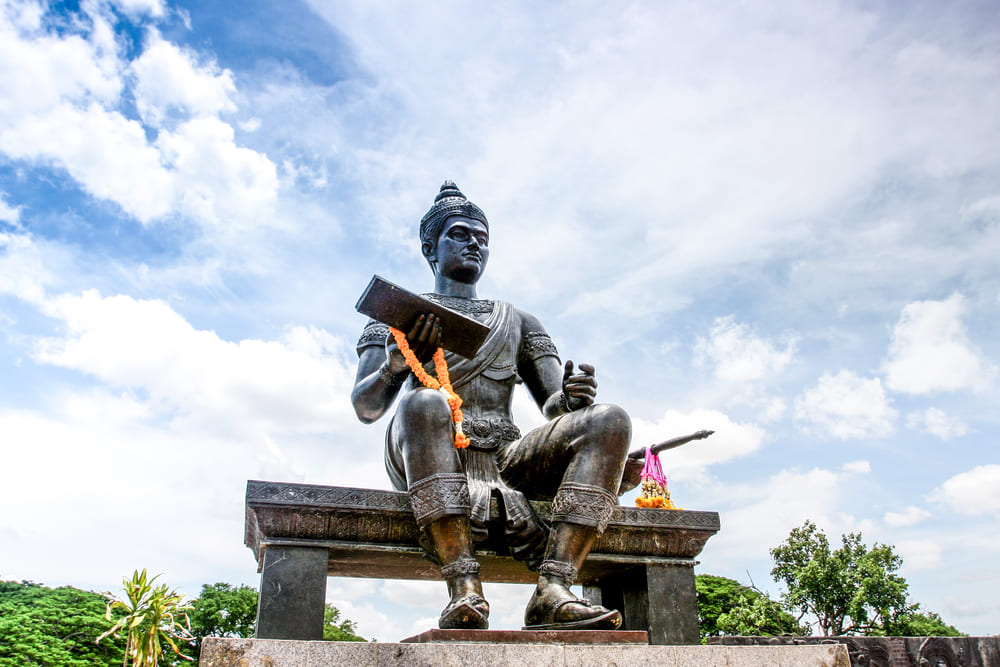
King Ramkhamhaeng, one of the most important figures of the Sukhothai period, created the Thai script and peacefully governed the empire. To commemorate his legacy, the King Ramkhamhaeng Monument was built in 1969.
The characteristics of the statue comprise the Sukhothai-style sculpted face and fine artistic sculpture of the body. The statue sits on a throne which is 4 meters long and 2.88 meters wide. The bronze and copper grand statue is double the size of a real human, sitting tall on the vast ground. Visitors come to admire the astonishing sculpture and pay respect to the late king throughout the year.

In addition to its temples, Sukhothai Historical Park also has a museum exhibiting the rich history of the Sukhothai Empire. Comprising two buildings and an outdoor area, the Ramkhamhaeng National Museum displays artefacts discovered in Sukhothai and Kamphaeng Phet.
Inside the museum, various items and artefacts are exhibited, including ancient weapons, antique ceramics, Buddha images, sculptures, and a replica of the Ramkhamhaeng stele. Outside the museum, you will find a replica of a kiln that was used to produce ceramics.
8. Wat Chetuphon
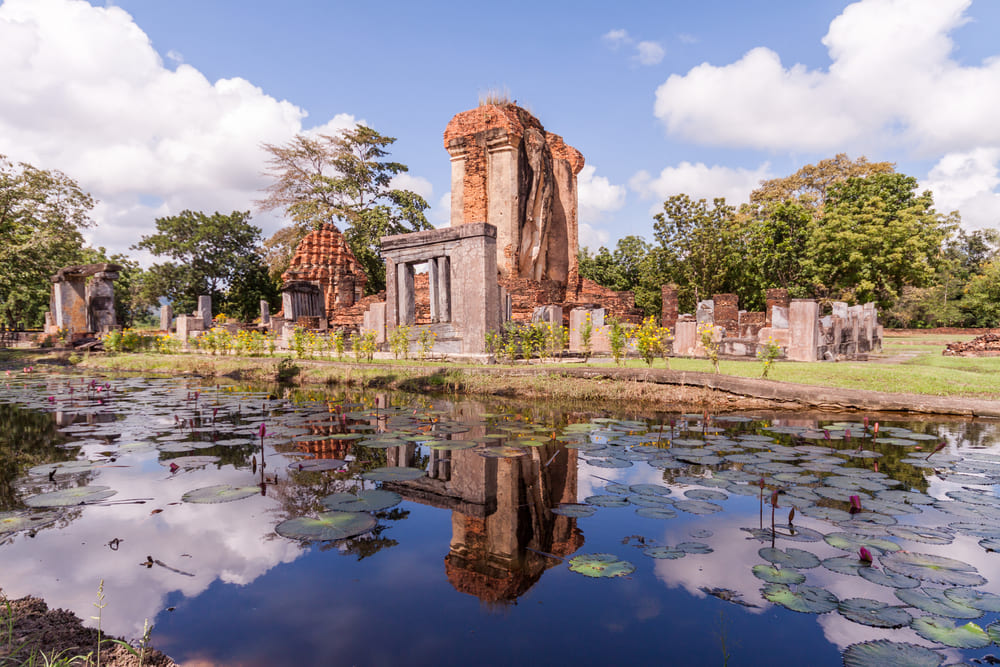
Wat Chetuphon is the largest temple in the southern part of the Sukhothai Historical Park. The founding date of the temple remains unknown. Consisting of a viharn, mandapas, and numerous small chedis, the temple is different from others as it does not have a main chedi to store sacred relics. Instead, the main mandapa enshrines four large Buddha images, making it the most important structure at the temple.

The main mandapa is home to Buddha images in different postures, including walking, standing, sitting, and reclining. While the walking and standing Buddha images are missing their heads, the sitting and reclining statues barely have any remains as time passed by.
Explore Wat Chetuphon and observe the unique feature of the large slabs of slate constructed as the walls surrounding the mandap. To date, parts of the walls are still standing, but the sheltered roof of the mandapa has collapsed, leaving only traces of ruins to admire.
9. Wat Saphan Hin

Facing old Sukhothai town, Wat Saphan Hin is located on top of a hill overlooking the Sukhothai Historical Park. Famous for its 12-meter-tall standing Buddha, the temple is in the western part of the park on a 200-meter-high mound.
Visitors have to climb up the mound to admire the temple and the panoramic landscape of the surrounding area. With its extensive view of the vast open plains, this spot is the most beautiful sunrise viewpoint at Sukhothai Historical Park.
On top of the mound, you will see the tall standing Buddha statue in a posture of dispelling fear known as Phra Attharot. The graceful Buddha image is in the remains of a viharn with another smaller seated Buddha image in a subduing Mudra position. It is believed that King Ramkhamhaeng travelled to the temple by riding his white elephant to worship the revered Buddha image.
10. Tha Nam Rab Sadet Market
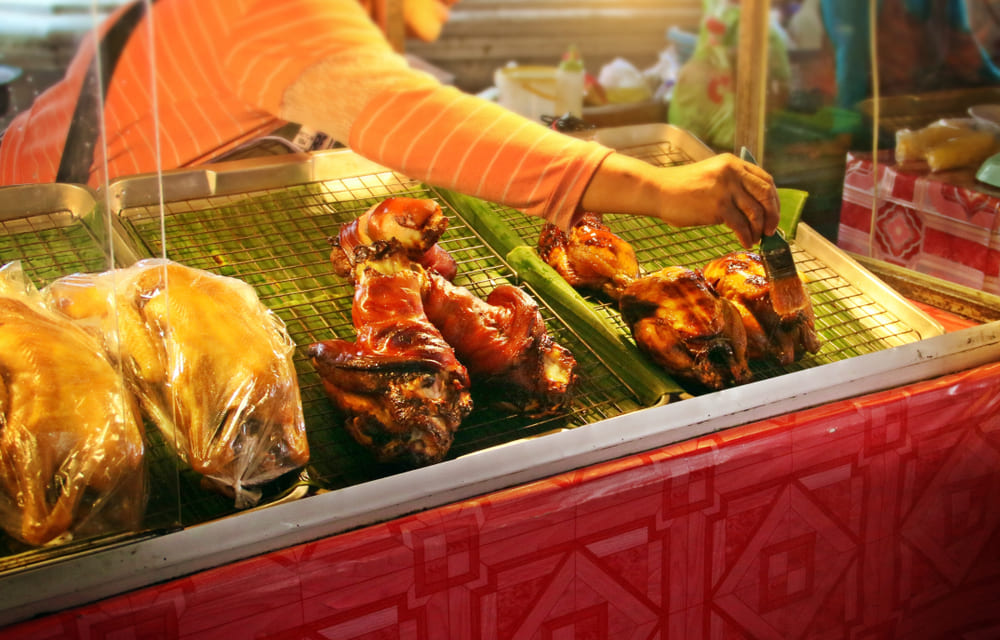
Located just 550 meters from the Sukhothai Historical Park, Tha Nam Rab Sadet Market is situated in the old town. Enjoy the warm and welcoming atmosphere at the market filled with delicious local food and snacks.
Once you arrive, there is a nice photo spot where visitors can snap photos to capture their visit. Inside the market, rows of fragrant food and snacks are present with tables throughout where you can sit down and enjoy the delicacy. Discover a variety of food choices, including meat skewers, grilled meatballs, and crispy spring rolls.
Don’t miss out on the famous Sukhothai’s local dish, Khao Perp, and try out the noodles wrapped in vegetable fillings served with a warm, seasoned broth. As the market is for the locals, the tasty dishes are at reasonable prices, allowing you to try as much food as you like without breaking the bank.
Opening hours: Friday – Sunday, 4:00 p.m. – 8:00 p.m.
Entrance Fees & Opening Hours of Sukhothai Historical Park
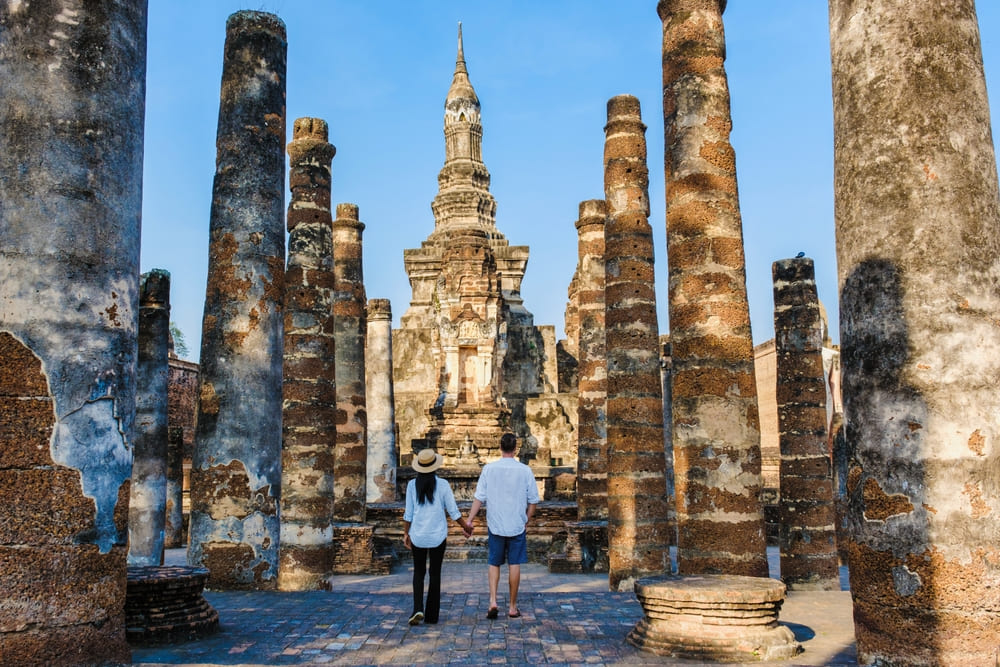
Sukhothai Historical Park is open daily from 6:30 a.m. to 7:30 p.m. Visitors must pay an entrance fee for each zone of the park with additional fees for bicycles or electric buggies. Free maps of the park can be collected at the ticket office for navigation.
Thai visitors:
- Admission ticket: 20 baht per zone
Foreign visitors:
- Admission ticket: 100 baht per zone
Vehicle charges:
- Bicycle: 10 baht
- Motorbicycle: 20 baht
- Three-wheeled vehicle: 30 baht
- Four-wheeled vehicle: 50 baht (only at Wat Phra Phai Luang and Aranyik district)
FAQs About Sukhothai Historical Park

When was Sukhothai designated as a UNESCO World Heritage Site?
In 1991, UNESCO officially listed Si Satchanalai and Kamphaeng Phet together under the name “Historical Town of Sukhothai and Associated Historical Towns”. The world heritage of Sukhothai extends beyond the historical park itself, and it is currently managed by the Thai government to preserve the heritage property.
How large is Sukhothai Historical Park?
Sukhothai Historical Park covers a vast area of approximately 70 square kilometers, and is divided into five zones: central, northern, eastern, western, and southern zones.
How old is Sukhothai Historical Park?
The Sukhothai Historical Park has been around for decades, showcasing the long history of Sukhothai. The Fine Arts Department initiated the development of the historical park and it was officially opened on the 20th of November 1988.
When is the best time to visit Sukhothai Historical Park
The best time to explore the Sukhothai Historical Park is from December to March. This is the dry season that offers cooler weather and less chance of rain. Traveling during this period is perfect for discovering historical sites and enjoying the outdoor attractions in comfort.
Moreover, it is recommended to start your exploration early in the morning or later in the day. This is to maximize your experience at the historical park and avoid the crowds and strong sunlight during the day.
Are there direct flights from Bangkok to Sukhothai?
Yes, Bangkok Airways offers direct flights to Sukhothai Airport, which is owned by us. With exceptional services, the flight takes approximately 1 hour and 20 minutes from Suvarnabhumi Airport to Sukhothai Airport.

Discover More Travel Destinations in Sukhothai, Thailand
- Inspiring Things to Do in Sukhothai, Thailand’s First Capital
- Tranquility Amidst Rain: Experience the Magic of Sukhothai in the Lush Season
Fly to Historic Sukhothai with Bangkok Airways
Explore the ancient ruins and historical sites at the Sukhothai Historical Park. Take a stroll or cycle around this UNESCO World Heritage site to enjoy the serene surroundings and admire the remaining ruins from the Sukhothai Empire from centuries ago. Start your journey by traveling without hassles with Bangkok Airways. Fly in comfort from Bangkok to Sukhothai with direct flights and arrive at your destination with ease.
Bangkok Airways: Experience Unparalleled Comfort and Convenience.
Embark on seamless travel adventures with Bangkok Airways’ extensive network of flights connecting you to Singapore, Laos, Cambodia, and Hong Kong. Additionally, enjoy our domestic flights to Chiang Mai, Bangkok, Koh Samui, Sukhothai, and Trat.
- Seat Selection: Choose your preferred seat on your flight to ensure a comfortable journey.
- Baggage Allowance Included: Enjoy up to 20 kg of checked baggage, allowing you to bring along your essentials without worry.
- In-flight Meals: Savor delicious and satisfying meals on board, tailored to your taste preferences.
- Airport Lounge Access: Relax and unwind in our exclusive airport lounges before your flight.
“ Bangkok Airways, Asia’s Boutique Airline ”


